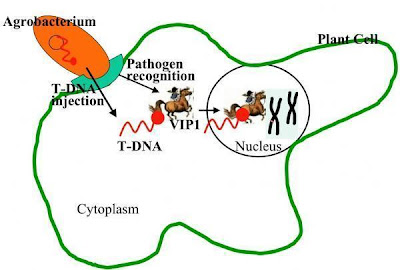Professor George Bennett, a Researcher from Rice University, said that Succinate is a key chemical ingredient that the U.S. Department of Energy expects to use for biosynthesis because Succinate has a broad utility for producing non-toxic solvents. Plastics, medicines, and food supplements. Succinate can be mass produced using bacteria that metabolize glucose and produce Succinate with large-scale fermentation.
 The focal point of Succinate production technology is to use a mutant form of E. coli that makes succinate as its only byproduct. The goal is to maximize the Succinate’s conversion rate from Glucose. The bacteria have been genetically modified several times in the past four years. The biotechnology is either to insert genes to boost Succinate’s conversion rate or to delete genes that interfere with Succinate formation. The bacteria developed by Professor Bennette were designated with the code SBS550MG. The code consists of two kinds of mechanisms.
The focal point of Succinate production technology is to use a mutant form of E. coli that makes succinate as its only byproduct. The goal is to maximize the Succinate’s conversion rate from Glucose. The bacteria have been genetically modified several times in the past four years. The biotechnology is either to insert genes to boost Succinate’s conversion rate or to delete genes that interfere with Succinate formation. The bacteria developed by Professor Bennette were designated with the code SBS550MG. The code consists of two kinds of mechanisms. The first mechanism is the deletion, from generic bacteria, of four genes that produce proteins that interfere with the ability to turn glucose into succinate. The second mechanism is the insertion of genes to stimulate Succinate’s production by adding Lactococcus bacteria and fungus Both types of Succinate’s production are totally different and they do not interfere or compete with one another. The success from the design of Succinate’s production to be complementary made Professor Bennett’s research group very satisfied. The chemical process can produce incredibly high volumes of Succinate because Glucose was converted into Succinate almost completely.
The first mechanism is the deletion, from generic bacteria, of four genes that produce proteins that interfere with the ability to turn glucose into succinate. The second mechanism is the insertion of genes to stimulate Succinate’s production by adding Lactococcus bacteria and fungus Both types of Succinate’s production are totally different and they do not interfere or compete with one another. The success from the design of Succinate’s production to be complementary made Professor Bennett’s research group very satisfied. The chemical process can produce incredibly high volumes of Succinate because Glucose was converted into Succinate almost completely.


No comments:
Post a Comment